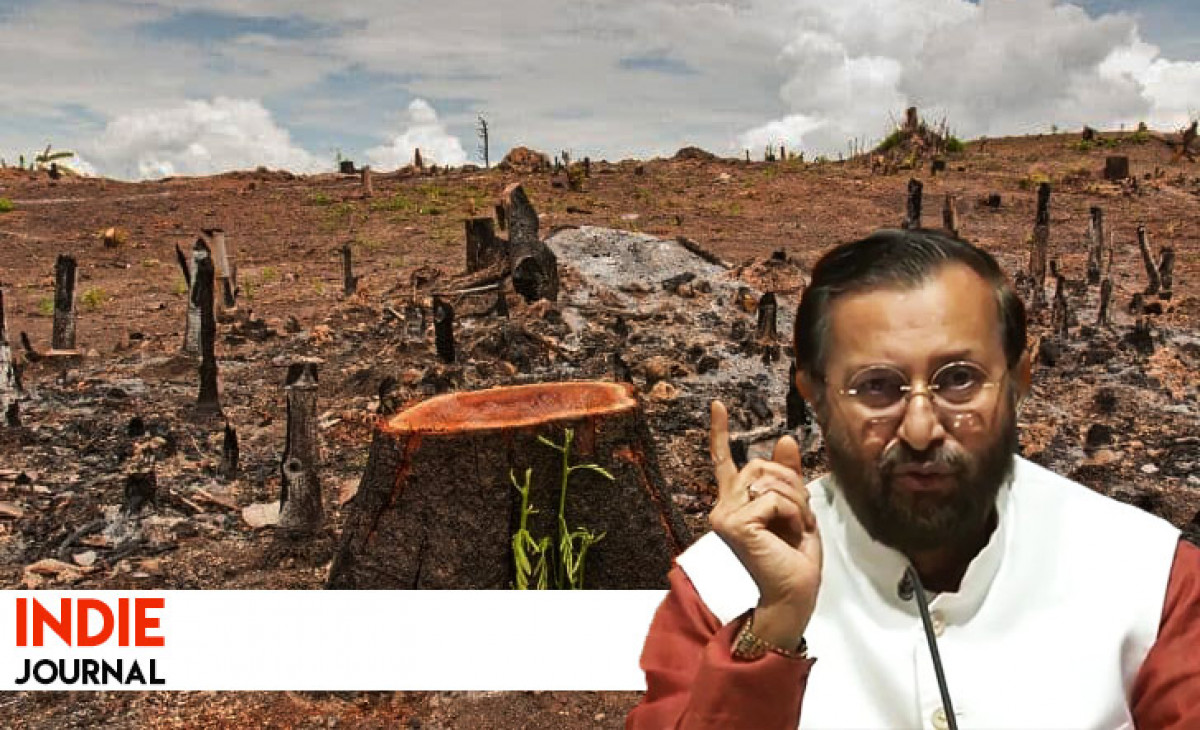India
Since 2014, less than one percent forest clearances were rejected by the MOEF, find analysts
Amidst draft EIA 2020 controversy, ecologist analyses a significant rise in environmental clearances post 2014.

Less than one percent of the proposals for forest clearances were rejected by the Union Ministry of Environment, Forest and Climate Change (MOEF&CC) between 2014 and 2020. An analysis of the raw data on clearances from PARIVESH, a portal hosted by the MOEF&CC has brought this to light. The analysis suggests that there has been a significant increase in the rate of environmental clearances for the forest category alone since 2014.
The analysis has been conducted by Vijay Ramesh, spatial ecologist, ornithologist and conservation biologist, who is presently pursuing PhD at Columbia University. “In the latest analysis, we analysed clearances between 2000 and 2006, 2007 to 2014 and 2014 to Present, which is available on Github https://github.com/vjjan91/Environmental-Clearances. You will notice a significant reduction in the rate of rejection of proposals,” Ramesh said.
In a thread shared on Twitter regarding the same, Ramesh pointed out that between 1975 and 2014, 84.68 percent of proposals submitted to the MOEF&CC were approved or pending to be approved, however, between 2014 and 2020, 99.3 percent of proposals submitted to were approved or pending to be approved.
Over the last few weeks, you must have read a lot about why the #DraftEIA2020 is horrible for our environment. Today, I analyzed over 48,000 clearance proposals that were approved/pending approval by the @moefcc and here's a gist of the results: #WithdrawEIA2020
— Vijay Ramesh (@vjjan91) June 25, 2020
While the data for wildlife clearances was not available on the portal, the data on environmental clearances is not quantifiable. Hence, an analysis was conducted on the raw data of 48,000 forest clearance proposals by binning clearances across three time periods.
Analysis of forest clearances
As per the analysis, 24,157 proposals were categorised as approved or under one of the pending categories between 2014 and 2020. During the same period, only 120 proposals were rejected, which makes the proportion of proposals rejected 0.5 percent of the total proposals.
Going back, between 2000 and 2006, a total of 6,695 proposals that were approved or pending categories, 1198, that is 15.2 percent of the proposals were rejected. The number of rejections lowered further in the period from 2007 to 2014. But still, 8.6 percent of the approved or pending to be approved proposals, that is 1396 out of 14710 proposals were rejected.
Thus, the area saved due to the rejection of proposals decreased from 2,54,555.6 hectares of the proposed area to be cleared / potentially cleared of 6,29,638 hectares between 2000 and 2006, to hardly 13,077.03 hectares saved from the proposed 14,82,247 hectares of area to be cleared / potentially cleared from 2014 to present.
Ramesh has also mentioned that the amount of forest area approved for clearing in 2016 was more than double the amount of forest area approved for clearing in 2006 alone. Also, his analysis showed that when compared to the previous time period, the area under mining has increased six-fold between 2014 to 2020.
States affected
From 2000 to 2006, the forest clearances affected large areas of forests in the biodiversity-rich state of Madhya Pradesh followed by Arunachal Pradesh. The forest clearances continued in the latter from between 2007 and 2014. In the latest period, post 2014, the focus of the clearings has shifted to Andhra Pradesh and Telangana.
According to the analysis by Ramesh, the spike in clearances in these states is towards mining activities.
Thanks Vishu. It is indeed towards mining. I did not include those graphs here, and they are on git. Here's a screenshot for AP and TL (the salmon colour is mining) pic.twitter.com/GaZBkcQUrP
— Vijay Ramesh (@vjjan91) June 26, 2020
Draft EIA 2020
The analysis by Ramesh has come at a time when the MOEF&CC is under the scrutiny for its attempt to hastily bring in the new draft of Environmental Impact Assessment (EIA) 2020 notification, although it has been criticised by environmentalists and organisations across the country for diluting the EIA process in environmental clearances for industries.
“The draft EIA 2020 poses a serious threat to the existing EIA norms and will result in further dilution of our environmental regulations. This could only result in fast-tracking of clearances without due process,” Ramesh said.
The draft EIA has also made a provision to reduce the time period for the public to submit their responses during a public hearing for any application from 30 days to 20 days. “Public hearing and consultation are extremely important before approval for forest clearance is given. We need to understand that there are multiple stakeholders at play here - one of whom includes indigenous communities and locals who rely on these forests for their livelihoods. Considering an ongoing pandemic, the MOEF&CC needs to make it a priority that every stakeholder's voice is heard,” wrote Ramesh in an email sent to Indie Journal.
Meanwhile, on June 30, the Delhi High Court has granted an extension to the time given to the public for giving opinion over the draft EIA 2020 till August 11.





